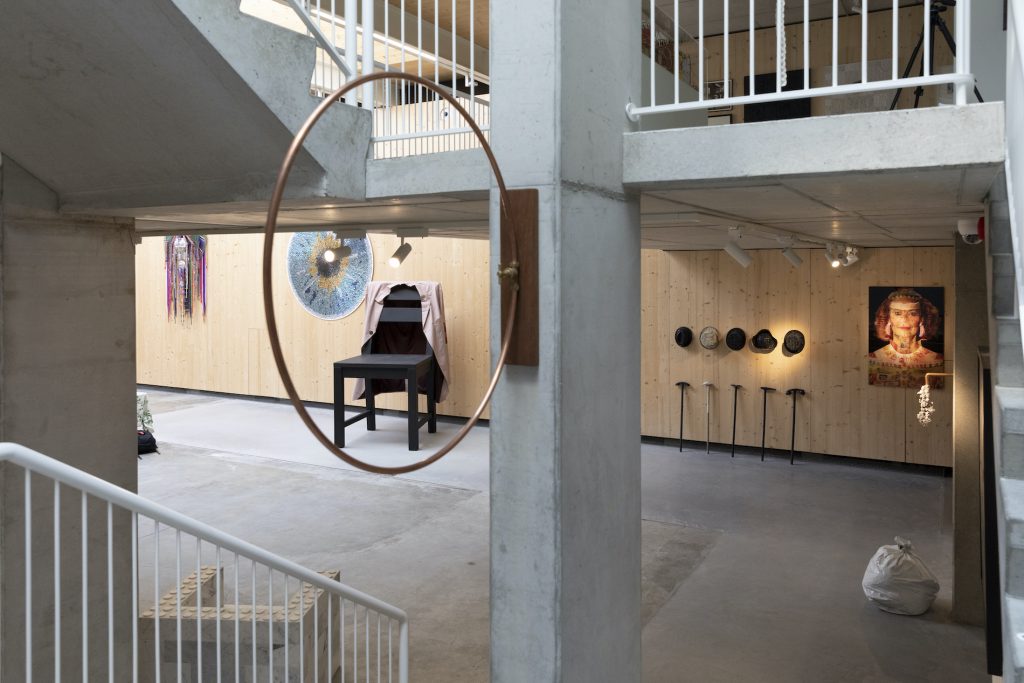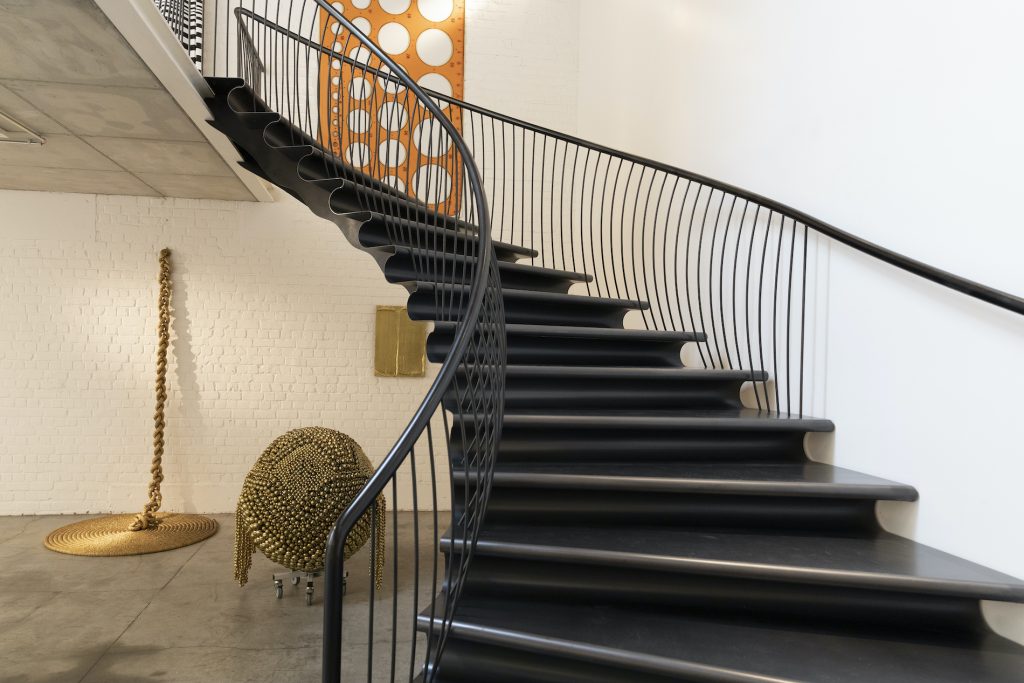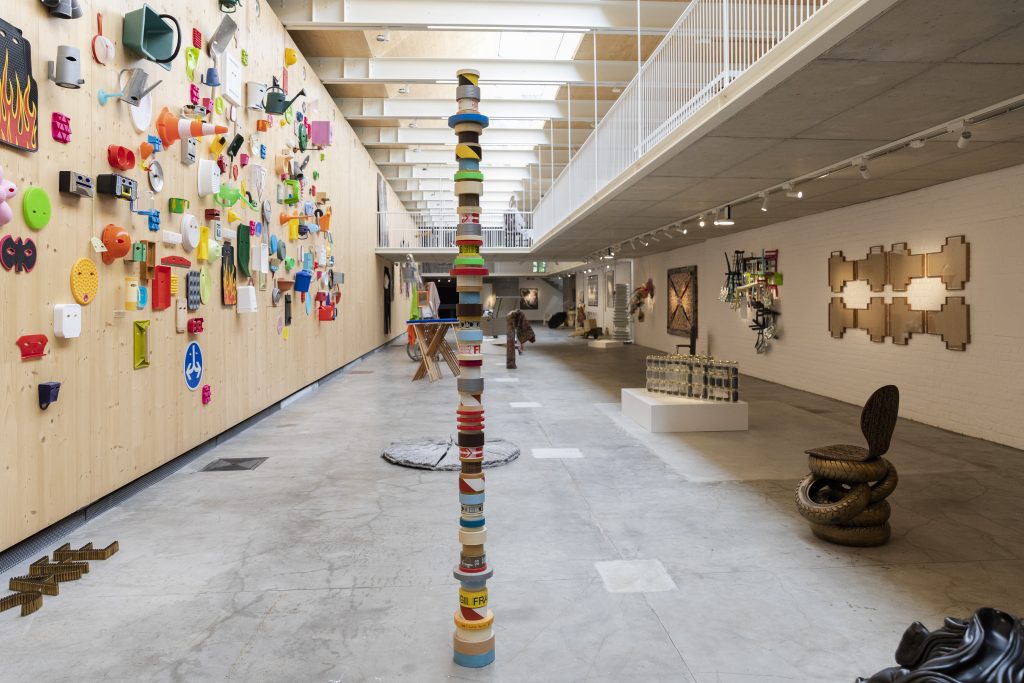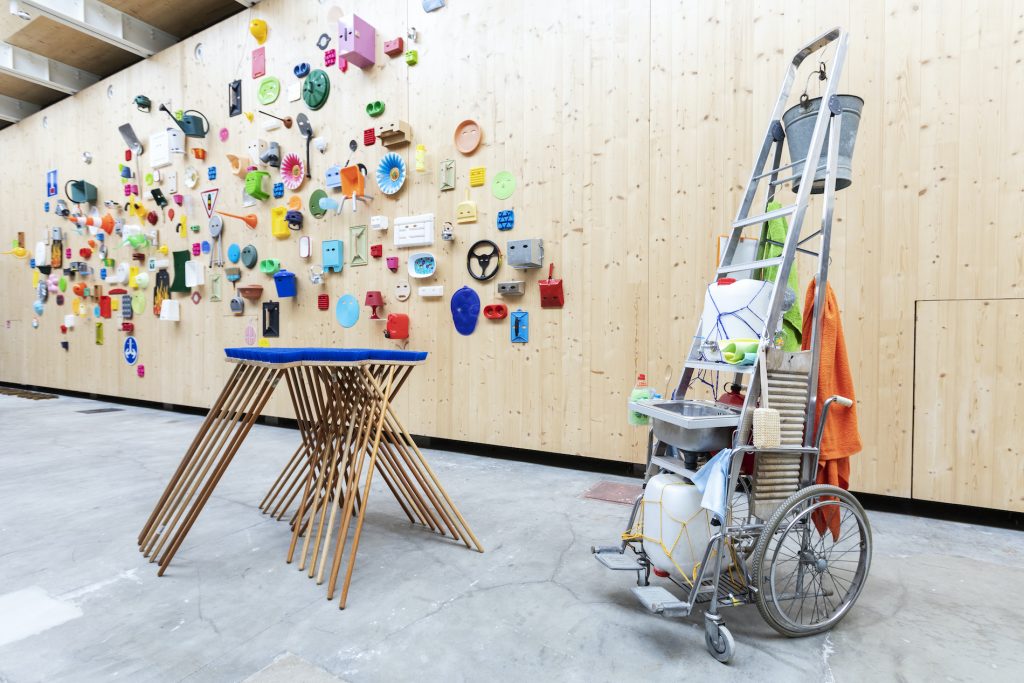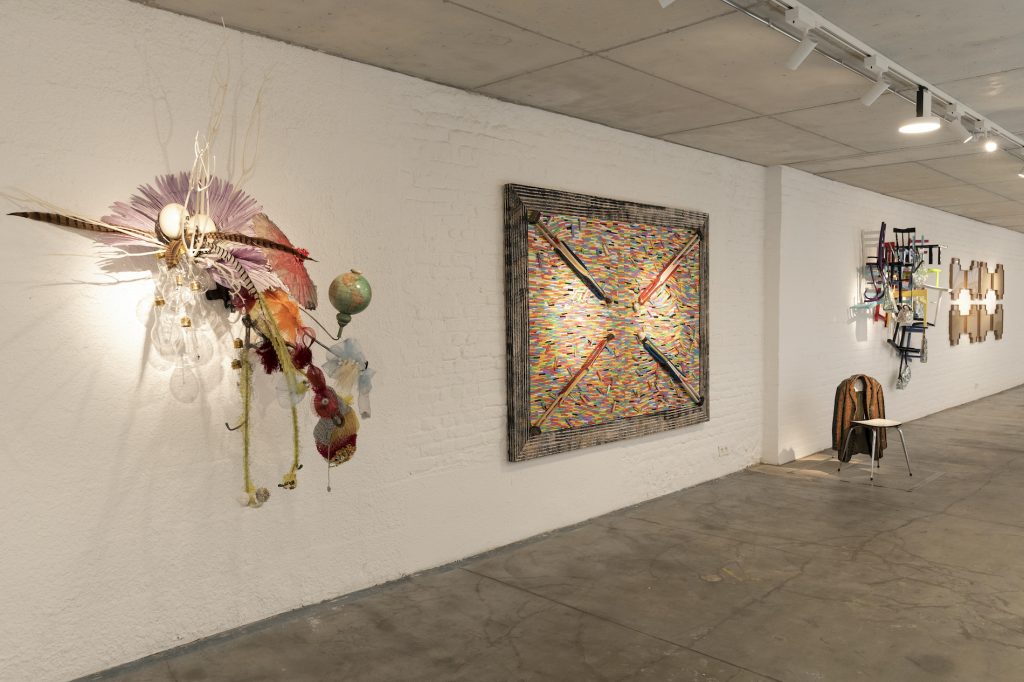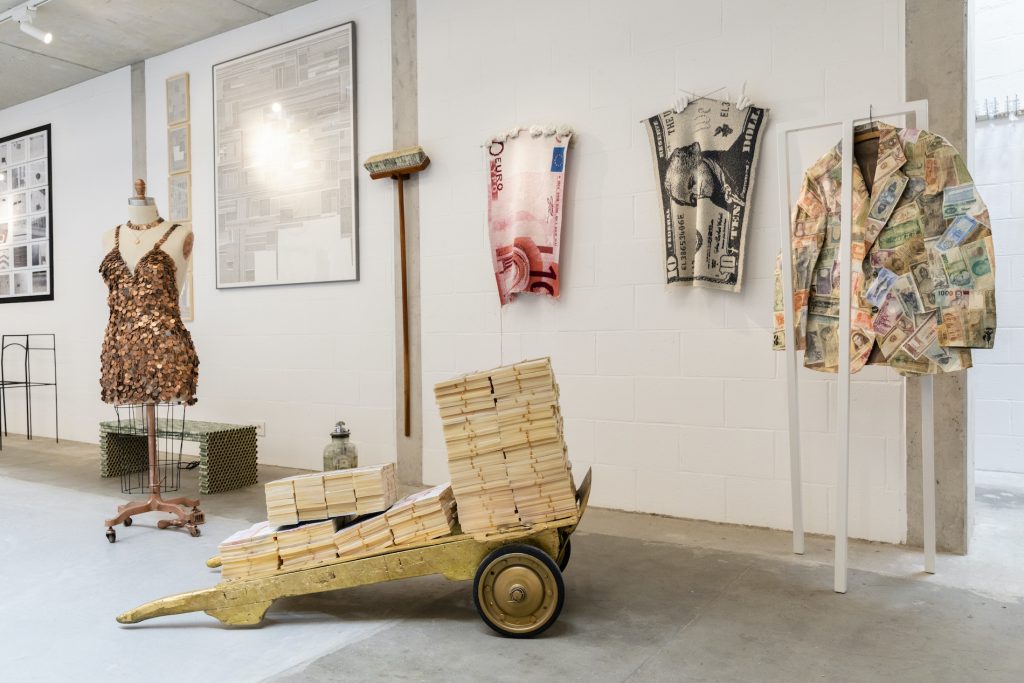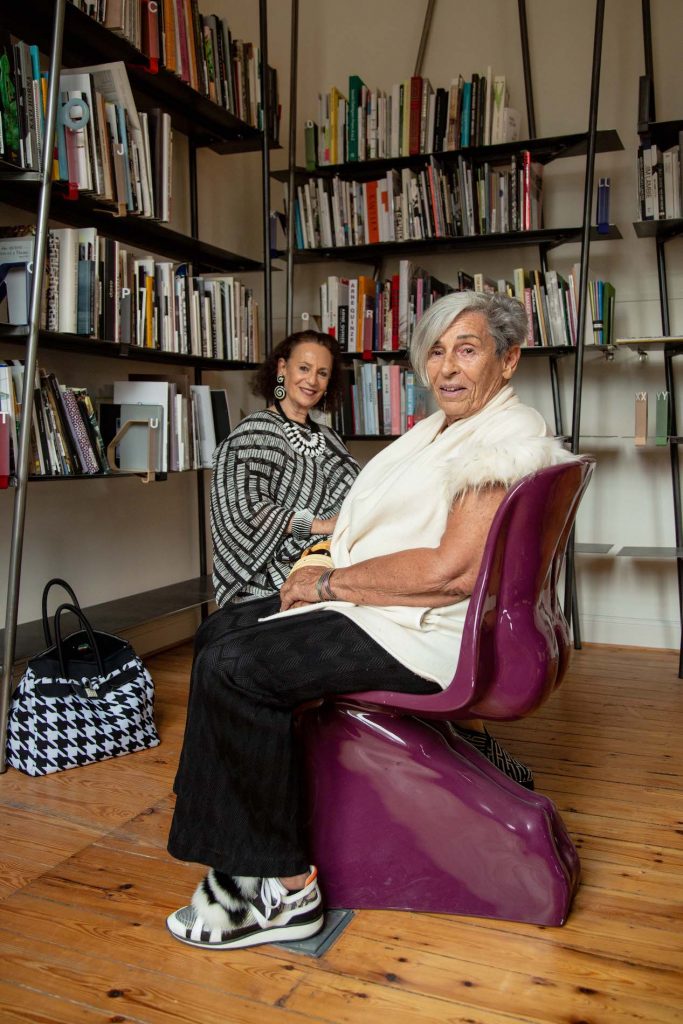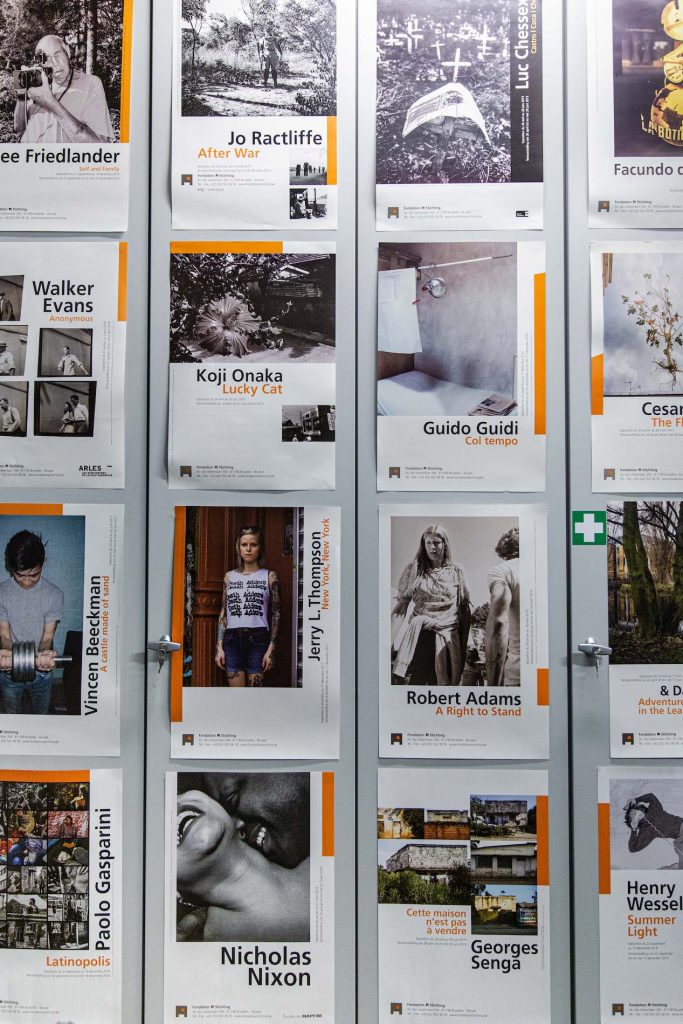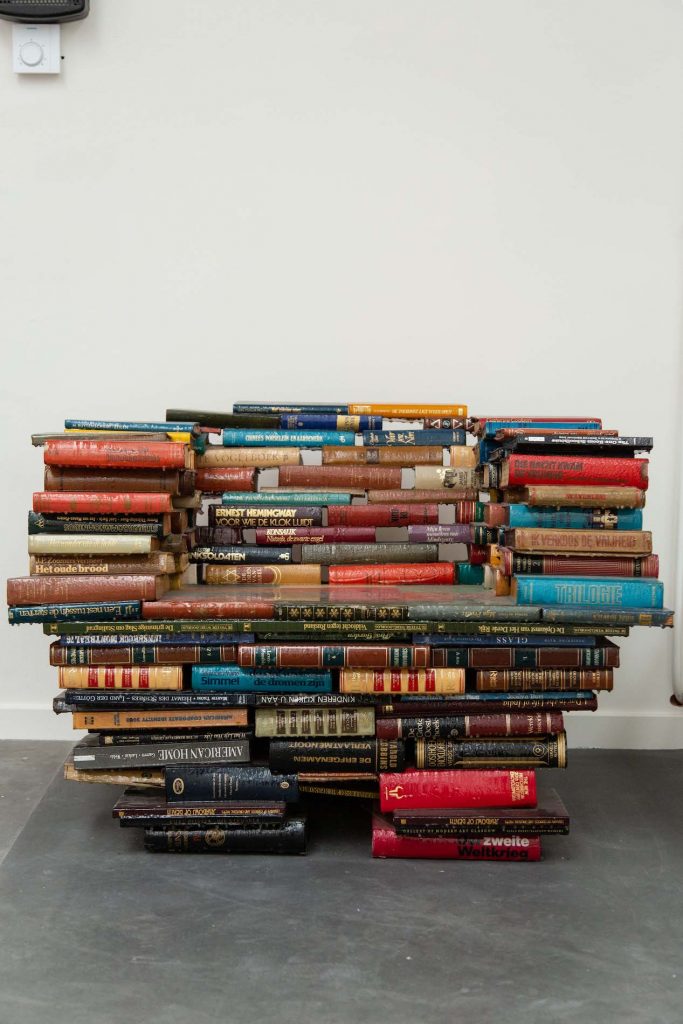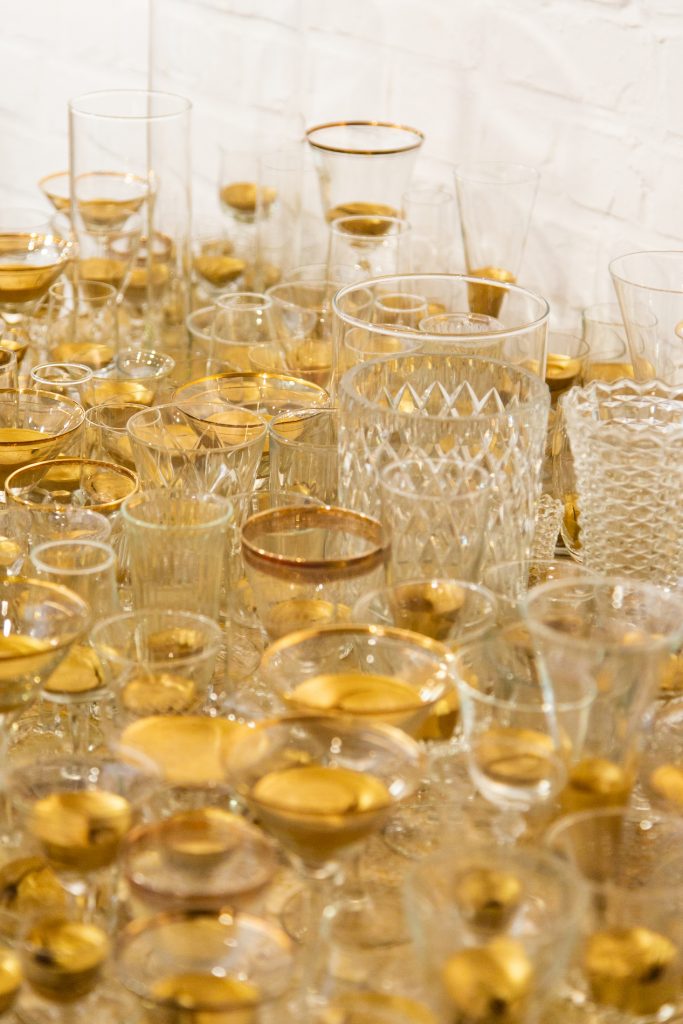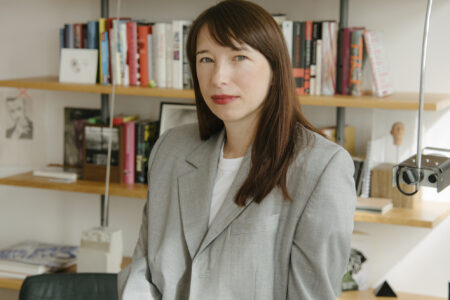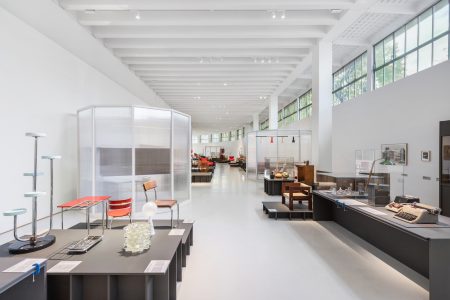A_POC: Carpe Diem
TLmag speaks to Astrid Ullens and Galila Barzilai Hollander, collecting contemporary art and photography and eclecticism.
Across from each other, they only have to traverse the street to come together. When two great hearts and minds meet, each cultivating their passion with curiosity, commitment and intuition, it can only result in an extraordinary encounter. These are two female collectors with total commitment, for contemporary art and photography for Astrid Ullens, and the art of flamboyant eclecticism for Galila Barzilai Hollander.
The buildings of their artistic foundations face each other on Brussels’ avenue Van Volxem, in a neighbourhood that has been revived for more than 10 years, thanks to the presence of the contemporary art centre Wiels, but which remains in perpetual development. Neither raises the question of the ‘genius loci’ because, past the door of their foundation, you enter into their unique universe. Foundation A, the first letter of the alphabet for Astrid, is linked with a series of photographs by famous American photographer Lee Friedlander. “I bought his photos for $ 75, which would be unthinkable today.” Foundation A is a haven of peace, with its interior courtyard with Japanese maples, and its rich photography archive. For the moment it is a bit on ‘stand by’ during this long period of pandemic, but should reopen its doors as soon as possible. Across the way, Galila’s P.O.C. (Passion Obsession Collection), which opened almost a year ago, presents a generous and whimsical collection comparable to a mirror ball. Both live in joy, in an approach of sharing.
While their backgrounds are very different, they were fated to come together. Aristocratic Astrid Ullens de Schooten comes from Belgian nobility. Her path was marked out from birth, but she quickly struck out in another direction, to explore the twists and turns of existence in her own way. “I am not a passionate collector, but rather a fatalist. I had the chance to collect the great American photographers such as Diane Arbus, Walker Evans, Garry Winogrand, Lewis Baltz, of whom I have the largest photographic collection, and, more recently, Nicholas Nixon… With the Foundation A, I have been able to support young talented photographers, and to serve as a springboard for them internationally. I have also promoted great photographers who were unknown in Europe, such as the Italian-Venezuelan octogenarian Paolo Gasparini. Since its launch, I have been able to count on the support of the Henri-Cartier Bresson Foundation in Paris, the Rencontres d´Arles, the Élysée Museum in Lausanne, and the Reina Sofia Art Centre in Madrid. Galila’s roots are even less cohesive. “I mark my territory, following the voice of an enlightened eclecticism; I don’t have time to be an expert, I do everything … “, undoubtedly in search of identity. “I was born in Tel Aviv but I don’t know my original name. My father was born in 1922 and came to Palestine from Odessa, Ukraine. My mother was from Bucharest, in Bulgaria. Barzilai is a name that originated in the land of Israel. I continued to experience this uprooting when I arrived in Brussels, at age 20. I began my university studies in psychology and met my husband. Without a doubt, my collecting addiction comes from this need for roots. I live my origins like a myth.” In fact, many of the works in her collection tell a human story – sometimes funny, sometimes touching, but always rich in meaning. Astrid is now more in a process of transmission, with her four children and 15 grandchildren. In addition to photography as a symbolic memory and vestige culture, there is now the struggle for better living conditions for women in the Middle East. With conflicts and wars, Astrid is impacted by the destruction of heritage, in particular in Afghanistan, to which she is very attached thanks to her friendship with diplomat and writer Chékéba Hachemi. Humanitarian missions have led her on road trips there. This outpouring of generosity that drives her goes hand in hand with her commitment to the Afghan and other women whom she meets in Brussels, the education of young people, culture and respect for heritage, whether human, material or intangible.
Astrid Ullens started her collection with contemporary art, in particular Arte povera, minimalist and conceptual art with artists such as Luciano Fabro, Carl André, On Kawara, etc. Haunted by her fury for life, she followed in the footsteps of her mother, who took her out of her daily life to visit faraway lands. Far from being nostalgic, Astrid turns to photography, a medium that captivates her. “From an early age, I wanted to understand the twentieth century. My first purchase was a watercolour by minimalist American artist Robert Mangold. When my mother saw it, she told me that she hated it, but I had to keep going”. Photography became for her the ‘mirror of our century’ medium, capable of changing the way we see the world in which we live and making everyone aware of the major issues facing society. “My grandmother welcomed the greatest musicians, writers and artists of her time in her salon. My mother, was a self-taught art historian and field archaeologist in the Middle East, a diplomat’s wife … she took more than 8000 photographs and slides on Iran, which were bequeathed to Harvard University in United States. My dream would be to one day recover them”.
For Galila Barzilai Hollander, collecting became an addiction following the 2004 death of her husband Jacques Hollander, after 30 years together. She worked with him on the beautiful Hotel Siru project in Brussels, a fascinating adventure that lasted 25 years. “I collect everything except paintings. Photography has no special status; I see it more as a medium. Between Dadaism and aesthetics, I conserve and recycle, I am a patron and encourage ‘young shoots’; I see myself as an ‘artist gardener’ who mixes, associates and cultivates a certain duality so as not to reveal too much of myself and become recognisable.” There are known themes in Galila’s contemporary art collection, but no style or preconception. Measure and money, the eye, chairs and books, readymade, recycling and appropriation are all directions that allow her to explore the dimensions of existence without getting bored. Her collection is a perpetual fountain of youth. They resemble each other, and she sees it as a psychoanalysis and a response to the first work she bought at the Armory Show in New York, following the loss of her husband. On this ink on paper by American artist Tom Fowler, “Why?” is written 11,522 times, raising the question of why and how, of the meaning of life.
With poetry, humour and joie de vivre, each in her own way Astrid and Galila share a collaborative spirit that passes through curiosity, visual perception, transmission and the desire to communicate their passion. In this era of coronavirus, time has come to a standstill, but they have not let go of their pilgrim staffs, ever ready to go on an adventure, with an energy that exceeds the norm. Their collecting is a creative process, reflecting their personalities; it is their narration. A never-ending story, Ariadne’s thread. A true geology of being.
This article is reposted from TLmag34 Extended: New Age of Humanism.
